Forget the old-school alarm systems that just blare a siren. Think of a smart home security system as your home’s very own digital watchman—one that’s always on duty, constantly learning, and keeping you in the loop. It’s an interconnected network of gadgets that creates a proactive shield around your home, giving you peace of mind that fits in your pocket.
How Smart Home Security Systems Actually Work

At its heart, a smart security system is just a team of internet-connected devices all talking to each other. A traditional system is pretty dumb—it just screams when a door opens. A smart system, on the other hand, weaves together a web of intelligent protection.
Think of every sensor, camera, and detector as a nerve ending in your home. When one of them senses something—motion in the hall, a window opening—it fires off a signal to the system’s “brain,” the central hub. That hub instantly processes the info and decides what to do next, whether it’s pinging your phone with an alert, sounding an alarm, or even telling your smart lights to turn on.
The Central Hub: The Brain of the Operation
Every smart security setup is built around a central hub or base station. This is the command center. It’s the piece of hardware that talks wirelessly to all your other devices, using common languages like Wi-Fi, Z-Wave, or Zigbee to keep everyone on the same page. This isn’t just a pile of gadgets; it’s a true ecosystem.
This seamless communication is what unlocks the magic of automation. For example, you could set up a rule that if a door sensor is tripped after 10 PM, the system automatically locks every other smart lock, flips on the exterior lights, and starts recording on all your cameras. It’s a huge leap from the purely reactive alarms of the past. To get a better handle on how all this connectivity comes together, you can check out our https://automatedhomeguide.com/embracing-the-future-an-introduction-to-smart-home-technology/.
The real difference is intelligence. A traditional alarm just yells, “Something’s wrong!” A smart system tells you exactly what’s happening and where, then hands you the controls to deal with it, even if you’re miles away.
Beyond Intrusion Detection
The beauty of these systems is that they do so much more than just watch for break-ins. The true strength of a smart home security system is its versatility—it gives you a complete picture of what’s happening at home.
- Remote Monitoring: Pull up a live video feed on your phone at work to make sure the kids got home from school safely.
- Instant Alerts: Get a notification the second a package is dropped on your porch or if someone forgot to close the garage door.
- Environmental Safety: Add smart smoke and carbon monoxide detectors that can alert both you and the fire department automatically.
This shift to smarter, more connected home protection is fueling massive growth in the industry. The global market was valued at USD 33.94 billion in 2024 and is expected to rocket to nearly USD 82.07 billion by 2030. This boom is all about people wanting security that doesn’t just protect them but also makes their lives easier.
Understanding the Core Components
A smart security system isn’t just a random assortment of gadgets. It’s an ecosystem—a team of specialized devices all working together to protect your home. To build a setup that truly works for you, it’s essential to understand who the key players are and what roles they play.
Think of it like assembling a crew for a specific mission. You need a leader, lookouts, and frontline responders. Each component has a job, and when they communicate effectively, they create a powerful, layered defense for your property. Let’s break down the roster.
Key Components and Their Functions
The hardware is the backbone of any security system. The table below outlines the essential pieces, what they do, and what to look for when choosing them.
| Component | Primary Function | Key Features to Look For |
|---|---|---|
| Central Hub / Base Station | Acts as the “brain,” connecting and coordinating all other devices. | Wi-Fi connectivity, Z-Wave/Zigbee support, battery backup, cellular backup. |
| Contact Sensors | Detects when doors or windows are opened or closed. | Slim design, long battery life, easy installation (adhesive backing). |
| Motion Detectors | Senses movement within a specific area using infrared technology. | Pet-friendly settings, adjustable sensitivity, wide detection angle. |
| Glass Break Sensors | Listens for the specific sound frequency of shattering glass. | Dual-sensor technology (acoustic and shock), adjustable range. |
| Video Doorbells | Provides video/audio at your front door and alerts you to visitors. | High-resolution video (1080p+), wide field of view, two-way talk, package detection. |
| Smart Security Cameras | Offers live video monitoring and recording for indoor or outdoor areas. | Weather resistance (outdoor), night vision, AI-powered person/vehicle detection. |
| Smart Locks | Allows you to lock and unlock doors remotely and manage access. | Keypad entry, auto-lock features, integration with other smart devices. |
| Sirens / Alarms | Emits a loud sound to deter intruders and alert neighbors. | 100+ decibel volume, separate indoor/outdoor models, visual strobe light. |
Each of these components plays a crucial part in a comprehensive security strategy, from initial detection to active deterrence.
The Brains: The Central Hub
At the heart of it all is the central hub or base station. This is the quarterback. It’s the command center that receives signals from every sensor and camera and decides what to do next. It connects to your Wi-Fi and uses wireless protocols like Z-Wave or Zigbee to talk to all the other devices.
When a window sensor is tripped at 2 AM, the hub is what gets the signal. It then sounds the alarm, flashes the lights, and instantly sends that critical notification to your phone. It’s the silent coordinator making sure everything works in perfect harmony.
The following diagram shows how this command center connects all the other parts of a complete security setup.

As you can see, the hub is the essential link that ties your surveillance and detection gear together into one cohesive system.
The Eyes and Ears: Sensors and Surveillance
If the hub is the brain, then the sensors are the system’s nerve endings. They are your digital eyes and ears, constantly on alert for specific triggers. Each type of sensor has a very distinct job.
- Contact Sensors: These are your perimeter guards. They’re simple, two-piece devices that go on doors and windows. When the door or window opens, the magnetic connection is broken, and a signal is sent to the hub. It’s your first line of defense.
- Motion Detectors: These cover the big, open spaces inside—think living rooms, basements, or long hallways. Using passive infrared (PIR) technology, they detect the heat signature of a person moving through their field of view.
- Glass Break Sensors: Burglars don’t always open windows; sometimes they smash them. These specialized sensors are tuned to listen for the unique acoustic frequency of shattering glass, giving you another layer of protection.
Surveillance gear, on the other hand, gives you the context. It provides the visual proof you need to understand exactly what’s happening.
A sensor tells you that something happened. A camera shows you what happened. That one-two punch of detection and verification is what makes a modern system so effective.
The Frontline Watchmen: Cameras and Doorbells
Smart cameras and video doorbells are the most visible and interactive parts of your security team. They are your sentries, letting you see and speak to anyone on your property, whether you’re on the couch or on vacation.
A video doorbell is so much more than a button. It’s a gatekeeper with a camera, speaker, and microphone. When someone approaches your door or presses the button, your phone buzzes. You can see who’s there and have a conversation with them from anywhere. Many now come with smarts like package detection to let you know when a delivery has arrived.
Smart security cameras, both indoor and outdoor, are your all-seeing eyes. They’ve come a long way from grainy, black-and-white feeds. Today’s cameras offer incredible features:
- Crystal-clear HD video (1080p or higher) so you can actually see details.
- Night vision that turns pitch black into day.
- Two-way audio to listen in or talk to whoever is there.
- AI detection that can tell the difference between a person, a passing car, and your neighbor’s cat, which dramatically cuts down on false alarms.
When you put it all together, you get a system where every component supports the others. A contact sensor triggers an alert, and your camera provides the immediate visual evidence you need to decide your next move. This synergy is the hallmark of a truly smart—and effective—home security system.
The Real Benefits of a Smarter Home

Sure, any security system is meant to protect your home, but a smart home security system goes so much further than just sounding an alarm. It’s not simply about preventing a break-in; it’s about making your everyday life easier, more convenient, and a whole lot less stressful. Think of it as having a constant, reliable connection to your home, no matter where you are.
This modern take on security changes the game completely. It stops being a silent, passive guard and becomes an active, helpful part of your household, weaving protection right into your daily routines.
Unlocking True Peace of Mind
By far the biggest advantage is the peace of mind you get from being able to see what’s going on at home from anywhere. We’ve all been there—you’re at work and that nagging thought pops into your head: Did I close the garage door? Instead of worrying about it all day, you can just pull out your phone, check the status, and close it with a tap.
This kind of connection smooths over all those little anxieties. You can glance at a live camera feed to see the kids get home from school or get an alert that your package was delivered safely. It’s this ability to know, right now, that offers a level of calm that old-school systems just can’t match.
A smart security system gives you a digital window back into your home. It’s not just for emergencies—it’s for the everyday moments of uncertainty that can disrupt your focus and comfort.
Seamless Home Automation and Convenience
Here’s where a smart security system really starts to shine: its ability to talk to your other smart devices. This is where security and convenience merge, creating a home that actually anticipates your needs and makes life simpler. Your gadgets stop being standalone items and start working together as a smart, coordinated team.
Let’s look at how this plays out in the real world:
- Smarter Lighting: Imagine your outdoor motion sensor detects movement after sunset. Instead of just triggering a camera, it can also turn on your porch and entryway lights automatically. This is great for deterring potential lurkers, but it also means you’ll always be welcomed home by a brightly lit path.
- Climate Control: You can link your security system to a smart thermostat. When you arm the system to “Away” mode as you leave, the thermostat automatically dials back to an energy-saving temperature. The moment you disarm the system upon returning, it kicks back to your perfect setting.
- Access Management: Need to let the dog walker in while you’re at work? No need for spare keys. Just create a temporary access code for your smart lock that only works during their scheduled time. You’ll even get a notification when they’ve arrived and left.
Connecting these pieces creates automated routines that just make sense. If you’re curious about building out this kind of connected home, you can learn more in our guide to smart home living.
Financial Perks and Increased Property Value
The benefits aren’t just about feeling safe and making life easier; they can actually help your wallet, too. Many homeowners find that their investment pays off in some very tangible ways.
For starters, installing a monitored smart home security system can often get you a nice discount on your homeowner’s insurance. Insurance companies love these systems because they actively reduce the risk of theft and property damage. As a reward, they’ll often lower your premium—sometimes by as much as 20%.
On top of that, a well-integrated smart security and automation system is a huge selling point if you ever decide to move. A home that’s already equipped with modern tech is far more appealing to buyers, which can boost its resale value and help it sell more quickly. It’s a clear sign that a home is modern, well cared for, and ready for the future.
How to Choose the Right Security System
Picking the perfect smart home security system can feel overwhelming. You’re hit with a barrage of features, tech jargon, and competing subscription plans. But here’s the secret: it’s not about finding the one “best” system out there. It’s about finding the system that’s best for you.
Don’t get lost in the noise. The whole decision really just boils down to a few key questions about how you want it installed, who’s going to monitor it, and how it will fit into the tech you already own. Nail down those answers, and the right choice will become surprisingly clear.
DIY vs Professional Installation
First things first: who’s going to put this thing in? There’s no wrong answer here, and what you choose really depends on your budget and how comfortable you are with a little tech setup.
DIY (Do-It-Yourself) Installation is what most people are choosing these days, and it’s easy to see why. Companies like Ring and SimpliSafe have made it incredibly simple. Most of their sensors just stick onto your walls and doorframes—no tools, no fuss.
- Pros: You save a good chunk of money right off the bat with no installation fees. Plus, you have total freedom to place sensors exactly where you think they’re needed.
- Cons: The responsibility is on you. You’ll need to set aside some time to read the instructions carefully and make sure everything is placed correctly for it to work right.
Professional Installation means a certified technician handles everything. They’ll walk through your home, figure out the best spots for every sensor, and won’t leave until the entire system is up and running perfectly.
- Pros: It’s a guaranteed expert setup, which is great for bigger or more complex homes. It also saves you the time and headache of doing it yourself.
- Cons: You’ll have to pay an installation fee, which adds to your upfront cost.
It really comes down to this: if you can set up a new smartphone or Wi-Fi router without breaking a sweat, you can probably handle a DIY security system. If you’d rather have an expert take care of it for a guaranteed-perfect setup, go professional.
Self Monitoring vs Professional Monitoring
Once it’s installed, the next big decision is who keeps an eye on it. This choice is critical because it determines what happens when an alarm actually goes off in an emergency.
Self-Monitoring puts you in the driver’s seat. When a sensor is triggered, you get an alert on your phone. It’s then up to you to look at your camera feeds, decide if it’s a real threat, and make the call to 911 yourself. This approach usually has a very low monthly fee, or sometimes none at all.
Professional Monitoring, on the other hand, connects your system to a 24/7 call center. When an alarm sounds, a trained professional is notified instantly. They’ll try to call you first to make sure it’s not a false alarm. If they can’t reach you or you confirm there’s a problem, they dispatch the police or fire department for you. This peace of mind comes with a monthly subscription fee.
This is a foundational piece of your home’s protection plan. If you’re looking to explore different security strategies in more detail, you can check out our various smart home security guides.
Subscription Costs and Ecosystem Compatibility
Beyond just monitoring, many smart home security systems have subscription plans that unlock extra features. Things like cloud storage for your camera footage, smarter AI-powered alerts (like telling the difference between a person and a passing car), and extended warranties are often tied to a monthly plan. Before you commit, get a clear picture of what you get for free versus what you’ll have to pay for.
It’s also crucial to make sure the system plays nicely with the smart home gear you already have. If you’re an Alexa or Google Assistant household, you’ll want a security system that works with them. This lets you do things like arm the system with your voice or create routines where your lights turn on automatically when motion is detected.
Essential Digital Security Features
Finally, never forget that a smart system needs to protect you from digital threats, too. Anything connected to the internet is a potential target for hackers if it isn’t locked down properly. Make sure any system you consider has these non-negotiable features:
- Data Encryption: This scrambles your data and video feeds, making them unreadable to anyone trying to snoop. Look for AES-256 encryption—it’s the gold standard.
- Two-Factor Authentication (2FA): This is a must-have. It adds a second security step to your login, usually a code sent to your phone. Even if someone steals your password, they can’t get into your account without that code.
The demand for these powerful, easy-to-use systems is exploding. As of 2024, nearly 94 million households in the U.S. have a security system. Cameras and video doorbells are leading the charge, with about 26% of people planning to buy a camera in the next year. You can dig into more stats about the home security market’s growth over at SafeHome.org.
Getting Your Installation and Setup Right
A top-of-the-line smart home security system is only as good as its setup. I know the feeling—it’s exciting to unbox all those new sensors and cameras. But strategic placement and careful configuration are what actually turn that box of gadgets into a powerful security shield for your home.
Getting this right from the start is non-negotiable. It ensures your system works when you need it most, cuts down on those frustrating false alarms, and truly unlocks its potential.
Think of it like setting up a defense for a castle. You wouldn’t just cram all your guards at the front gate, right? You’d position them on the walls, at weak points, and in the towers to cover every possible angle. The same logic applies here. Every component has a job to do, and it needs to be in the right spot to do it effectively.
Strategic Device Placement
Where you physically put your sensors and cameras is probably the most critical part of the whole process. A poorly placed motion detector or a camera with a huge blind spot can leave a gaping hole in your home’s protection. The goal is to cover the most likely entry points and high-traffic areas without accidentally creating new vulnerabilities.
Here are a few pro tips for placing your key components:
- Contact Sensors: Stick one on every single ground-floor door and window. It’s easy to forget less obvious entry points like basement windows or the door leading from the garage into your home, so don’t skip those.
- Motion Detectors: These are perfect for main hallways or living areas that an intruder would have to cross. For the widest possible view, mount them high up in a corner. Critically, keep them away from heat sources like vents, radiators, or direct sunlight, which are notorious for triggering false alarms.
- Cameras: Your outdoor cameras should cover the front door, back door, and driveway. Just be a good neighbor and angle them to avoid pointing directly at their property. For indoor cameras, stick to large common areas; it’s best to keep them out of private spaces like bedrooms or bathrooms.
Fine-Tuning Your App and Settings
Once your hardware is in place, the real “smart” part begins inside the app. This is where you customize the system to fit your family’s unique lifestyle, transforming it from a generic alarm into a personalized security assistant. Taking the time to really dig into these settings is what makes the system a joy to use instead of a pain.
This screenshot from the Ring app, for instance, shows how you can customize motion zones for a video doorbell.

This level of control is fantastic. You can tell the camera to ignore all the motion on a busy sidewalk and only alert you when someone actually steps onto your property. This alone can drastically reduce the flood of unwanted notifications.
The default settings are just a starting point. True security comes from tailoring your system’s rules and alerts to match your daily routines. A system that understands when you’re home, away, or sleeping is a much more effective guardian.
A great place to start is by creating custom security modes. Most systems will give you at least three basic modes to configure:
- Disarmed: All sensors are inactive. This is your “at home and moving around” mode.
- Home/Stay: Interior motion sensors are turned off, but your perimeter sensors (doors and windows) are active. This is perfect for protecting you while you’re inside, especially at night.
- Away: Every single sensor—interior and exterior—is fully armed. The system assumes nobody should be inside the house, period.
By taking a thoughtful approach to both the physical installation and the digital setup, you’ll make sure your smart home security system is a reliable, intuitive, and powerful protector for your home.
Keeping Your System Reliable for the Long Haul
Think of your smart security system as a digital watchdog for your home. It’s always on alert, but even the best watchdog needs a little care to stay sharp. Effective security isn’t something you set up once and forget about; it’s an ongoing commitment.
A few simple maintenance habits can make all the difference, ensuring your investment continues to protect your home and family when it matters most. These easy, proactive steps are the key to guaranteeing the long-term reliability of your entire security network.
Perform Regular Physical Checkups
Your system’s hardware—the cameras, sensors, and doorbell—are its eyes and ears. Keeping them in top condition is absolutely essential for reliable performance, and a little physical care goes a long way.
Try to set up a simple monthly routine. First, grab a microfiber cloth and gently clean your camera and video doorbell lenses. Dust, grime, and even spiderwebs can easily obscure the view. Next, take a quick walk around your home to test all your sensors. Open and close each protected door and window to make sure the system registers the activity and sends you the correct notification.
Think of this as a fire drill for your security system. Regularly testing each component confirms that every part of the network is communicating correctly, ensuring there are no silent failures in your defenses.
Keep Your Software and Network Secure
The “smart” part of your system lives in its software and its connection to your network. If you ignore the digital side of maintenance, it’s just as risky as leaving a real window unlocked. This is where your system’s intelligence and responsiveness come from.
Your Wi-Fi network is the backbone of the entire operation. Make sure it’s locked down with a strong, unique password and uses WPA2 or WPA3 encryption. A weak or compromised Wi-Fi network is the easiest backdoor for someone to disrupt your security.
Equally important is keeping everything updated. Always install firmware and app updates as soon as they’re available. These aren’t just for adding cool new features; they often contain critical security patches that shield your system from newly discovered threats. Running on outdated software is like leaving your digital front door wide open.
Here’s a quick digital maintenance checklist to follow:
- Firmware Updates: Hop into the manufacturer’s app every now and then to check for updates for your hub, cameras, and sensors.
- App Updates: Turn on automatic updates for your security app on your phone. This ensures you always have the latest security patches without having to think about it.
- Password Health: Change your main security account password at least once a year. For a critical extra layer of protection, enable two-factor authentication (2FA).
Got Questions About Smart Security? We’ve Got Answers.
Jumping into smart home security can feel a little overwhelming, and it’s natural to have a few “what if” questions pop up. After all, this is about keeping your home and family safe. Let’s tackle some of the most common questions people ask before they make the switch.
What Happens if the Power or Wi-Fi Goes Out?
This is easily the biggest concern for most people, and for good reason. But rest assured, system designers have thought this through. The best systems come with built-in fail-safes.
Most professionally monitored setups include a cellular backup. Think of it as a private cell phone line for your security system. If your internet connection ever drops, the system automatically hops onto the cellular network to talk to the monitoring center without missing a beat.
And for power outages? The main hub and most critical sensors have backup batteries. These will typically keep everything running smoothly for several hours, so a temporary blackout won’t leave your home vulnerable.
Are DIY Security Systems as Good as Professional Ones?
They absolutely can be. A well-planned DIY system from a reputable brand uses the same high-quality hardware—and often the same monitoring services—as professionally installed ones.
The real difference comes down to installation. The effectiveness of any system, DIY or pro, depends on smart sensor placement and proper setup. If you’re comfortable following instructions and using a smartphone app, you can build a rock-solid security system and save a good chunk of money. A professional installer just takes the guesswork out of it for you.
The effectiveness of a system isn’t about who installs it, but how intelligently it’s configured. A correctly placed DIY sensor is far better than a poorly placed professional one.
How Do I Keep My System from Being Hacked?
Protecting your smart system from digital intruders is just as crucial as protecting your home from physical ones. Cybersecurity is a huge focus now, especially after incidents like the 1,475 data breaches reported in the U.S. back in 2019. In response, many security providers are bundling digital protection with their physical security plans, a trend highlighted in recent industry analysis.
Here are the non-negotiable steps to lock down your system:
- Create a strong, unique password for your security account. Don’t reuse passwords from other sites.
- Turn on two-factor authentication (2FA). This adds a critical second layer of defense to your login.
- Secure your home Wi-Fi network with WPA2 or WPA3 encryption. This is your first line of defense.
- Always install firmware and app updates. These often contain vital patches for security holes.
At Automated Home Guide, our goal is to demystify smart home technology so you can build a safer, more convenient home. To learn more, visit us at https://automatedhomeguide.com.
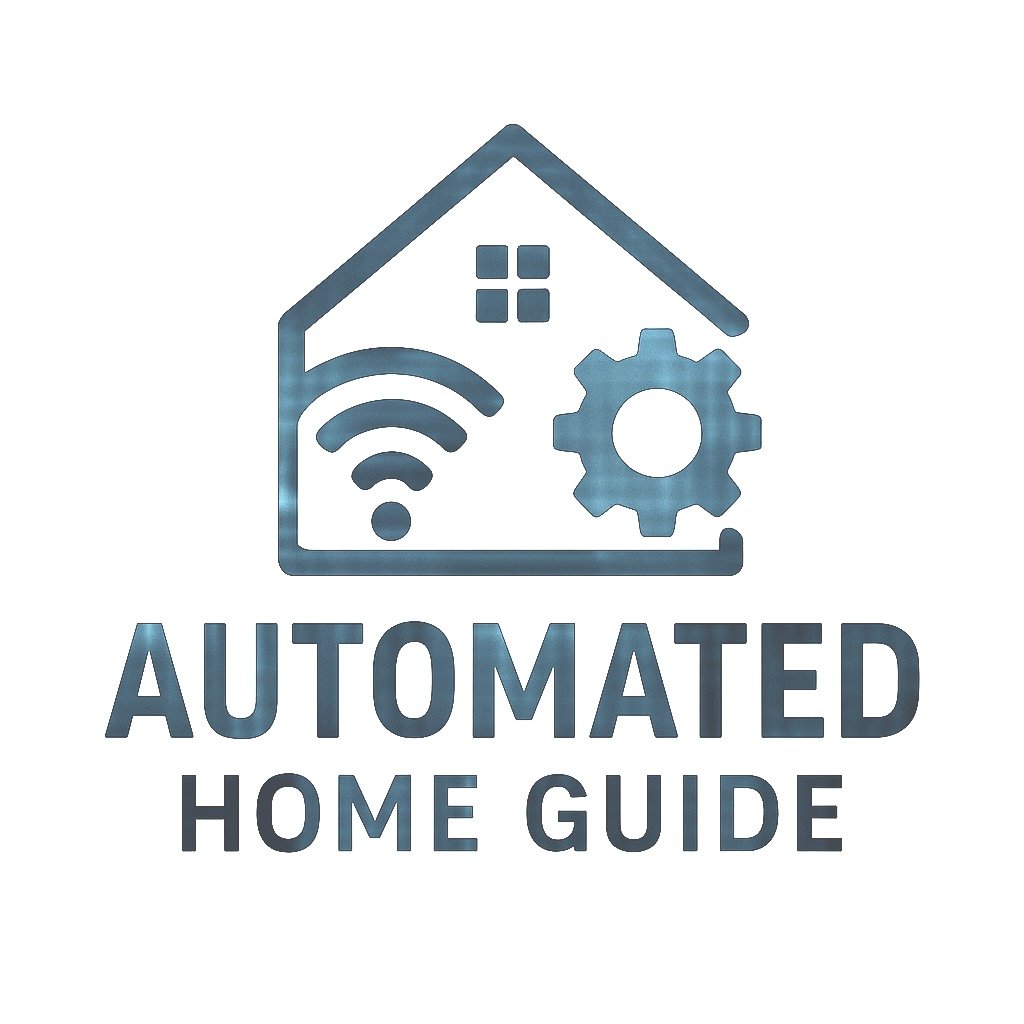
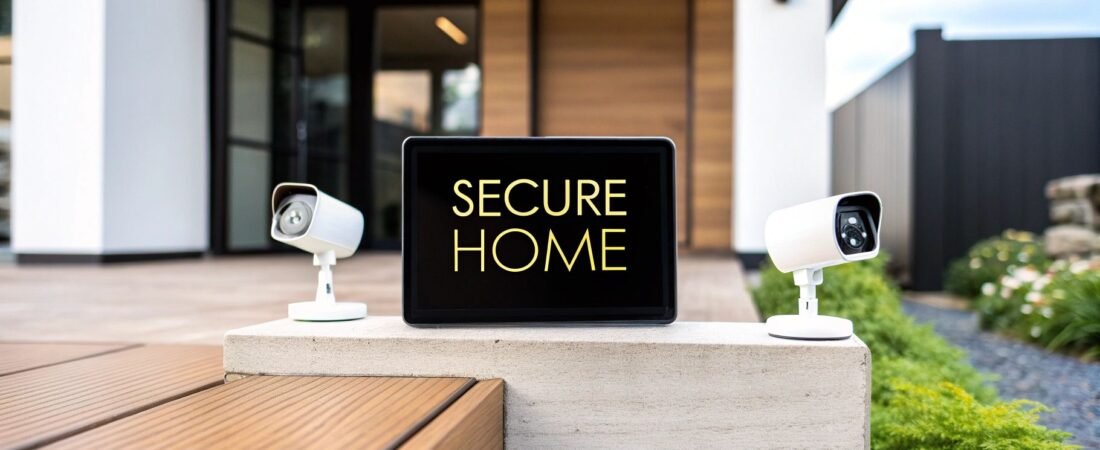
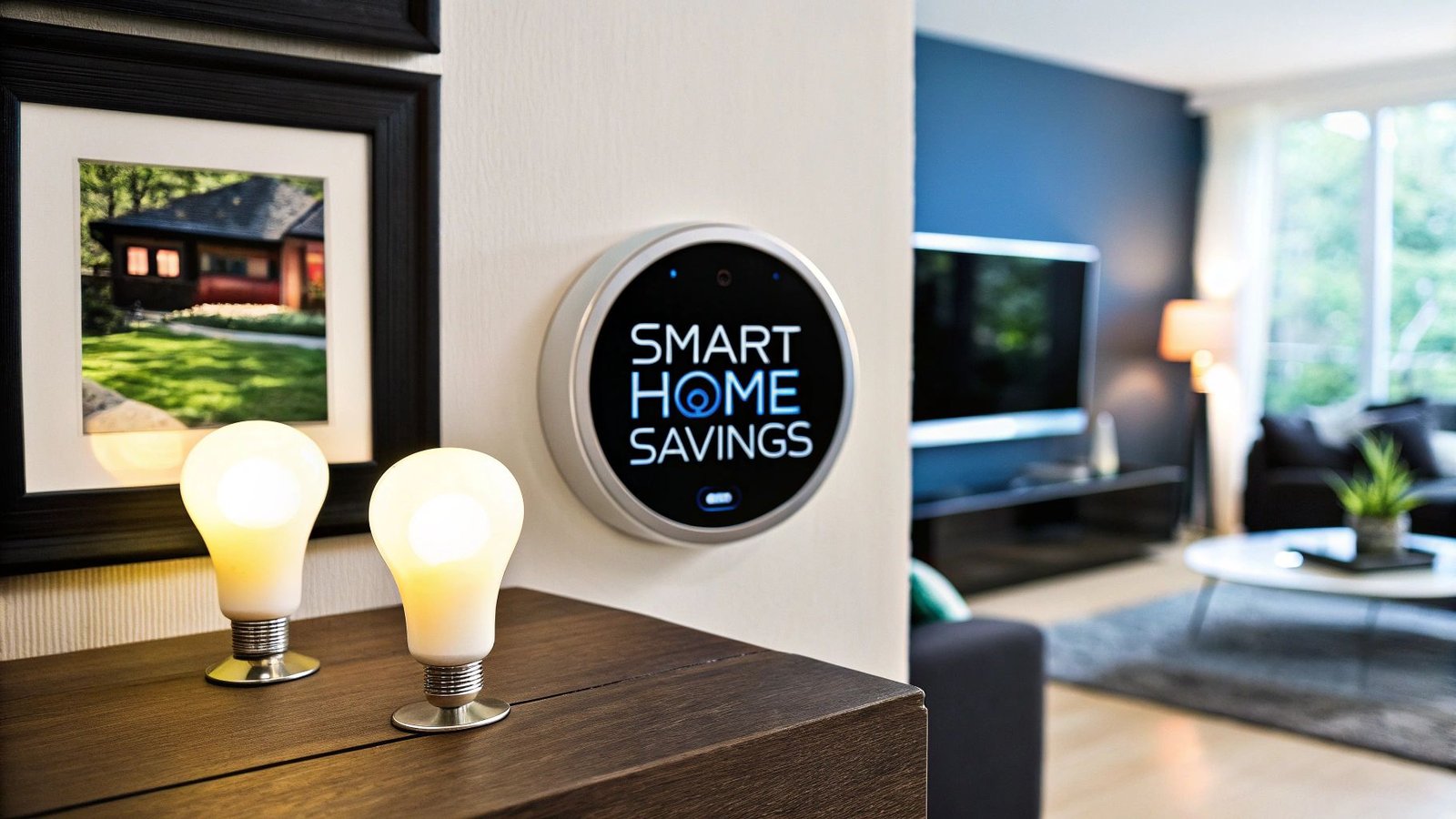
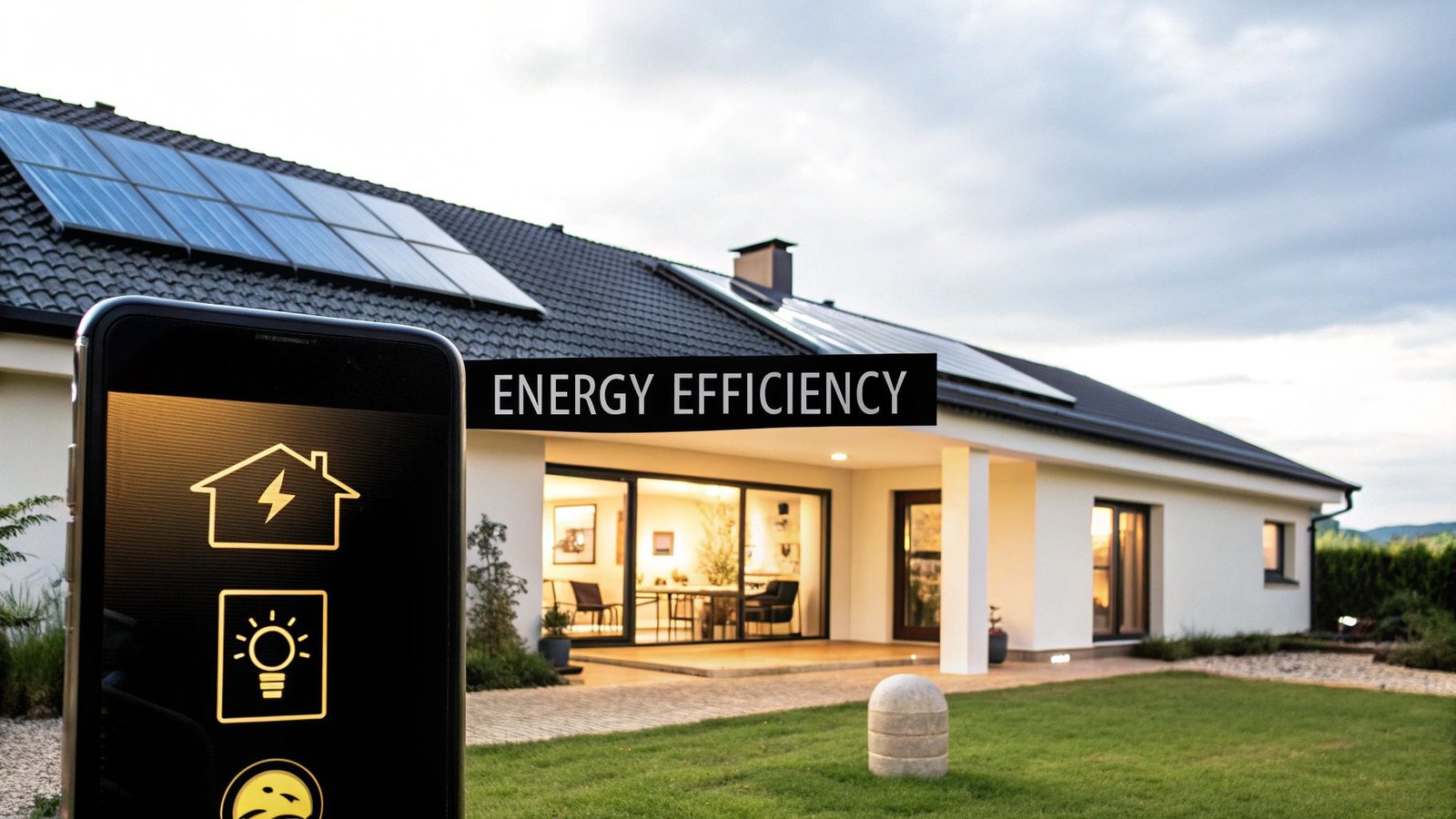
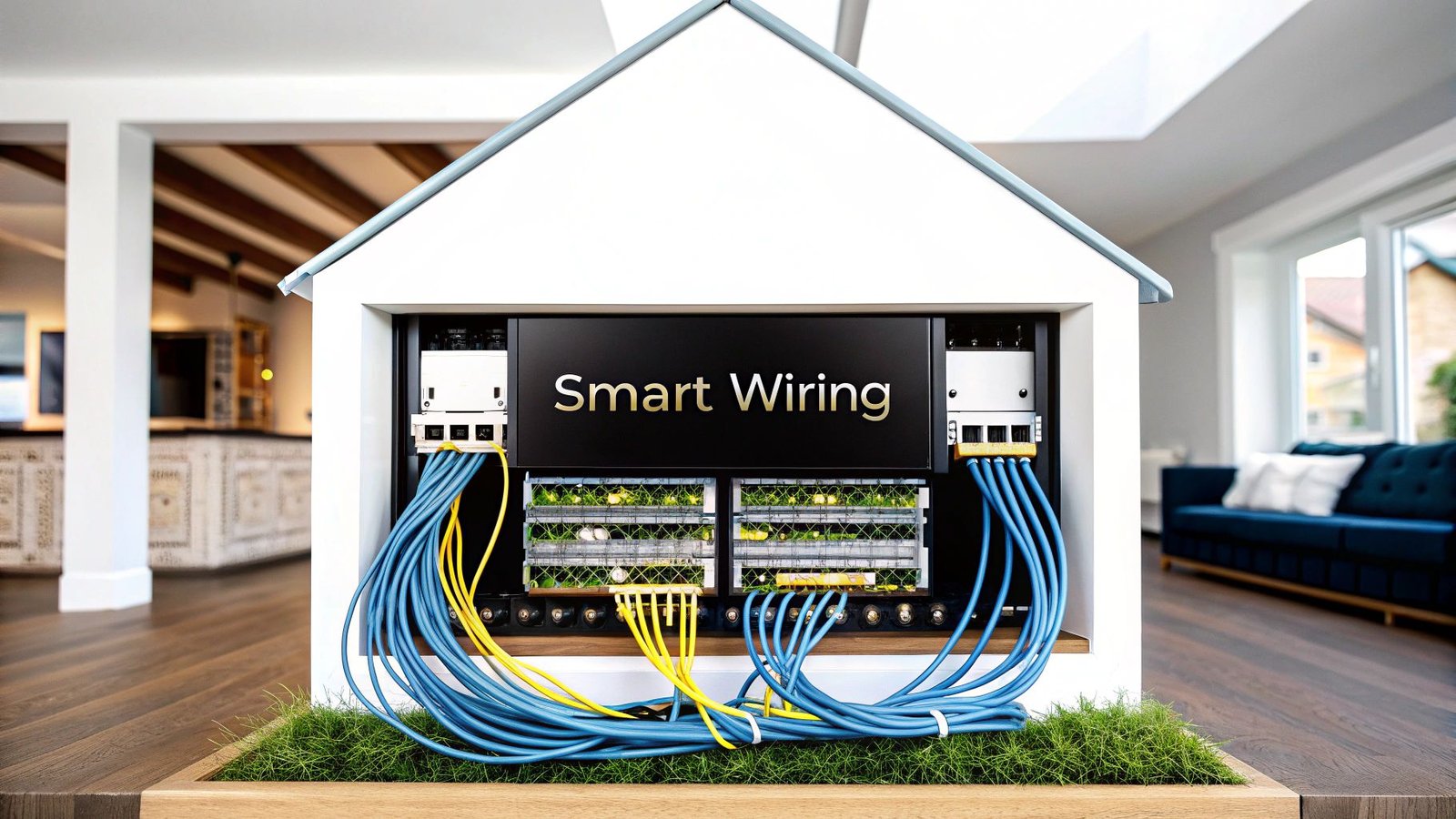
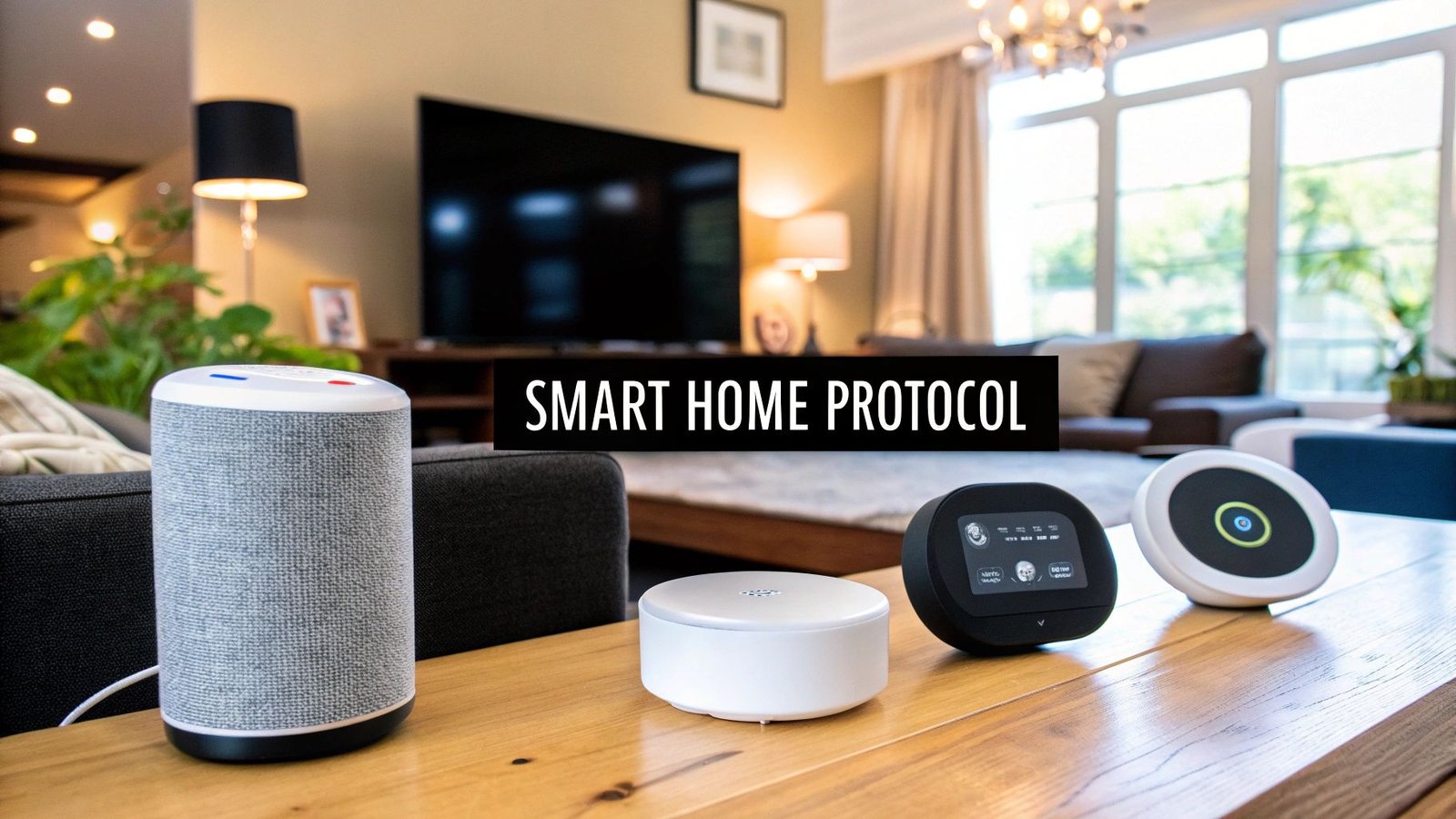
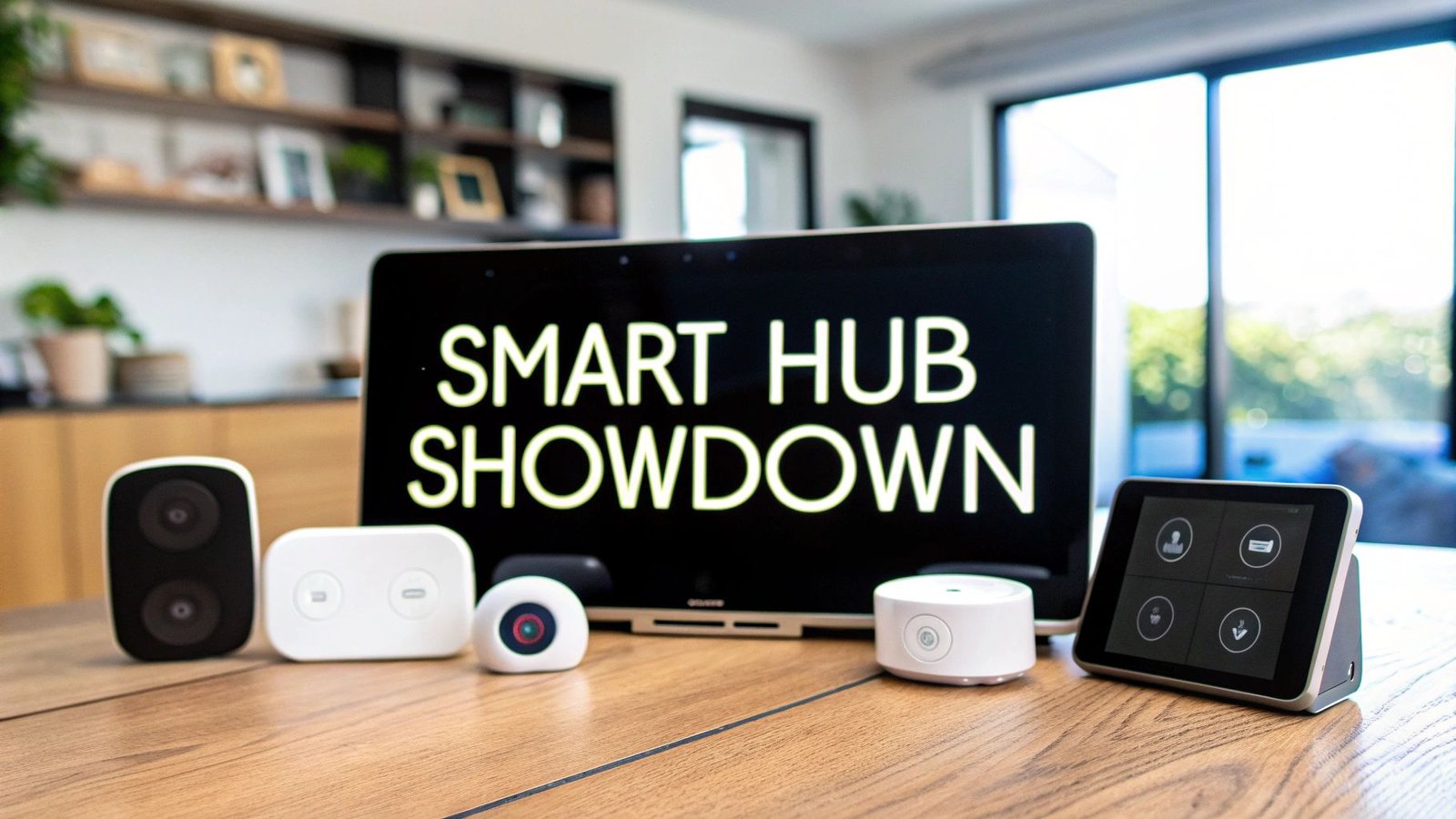
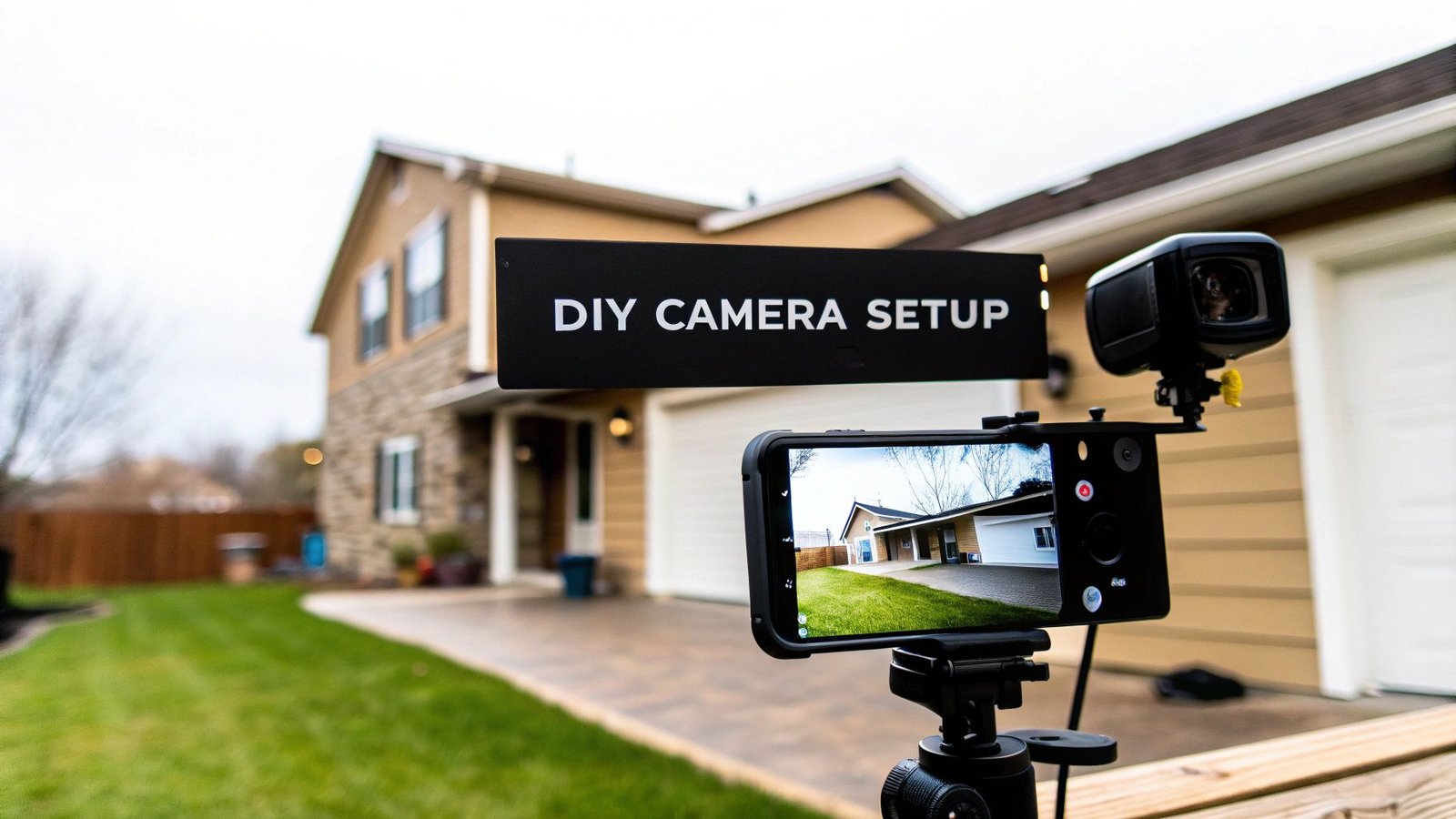
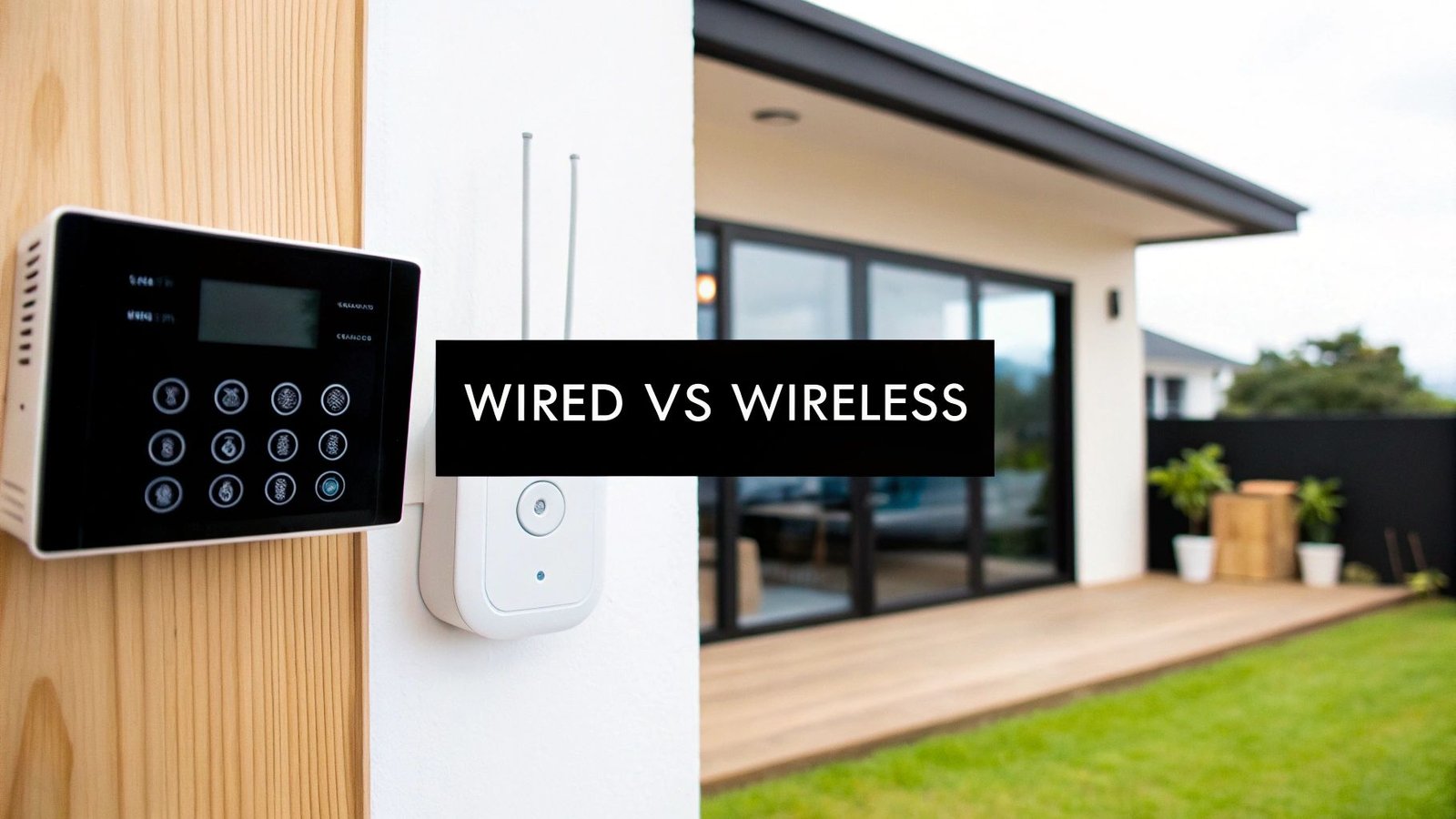
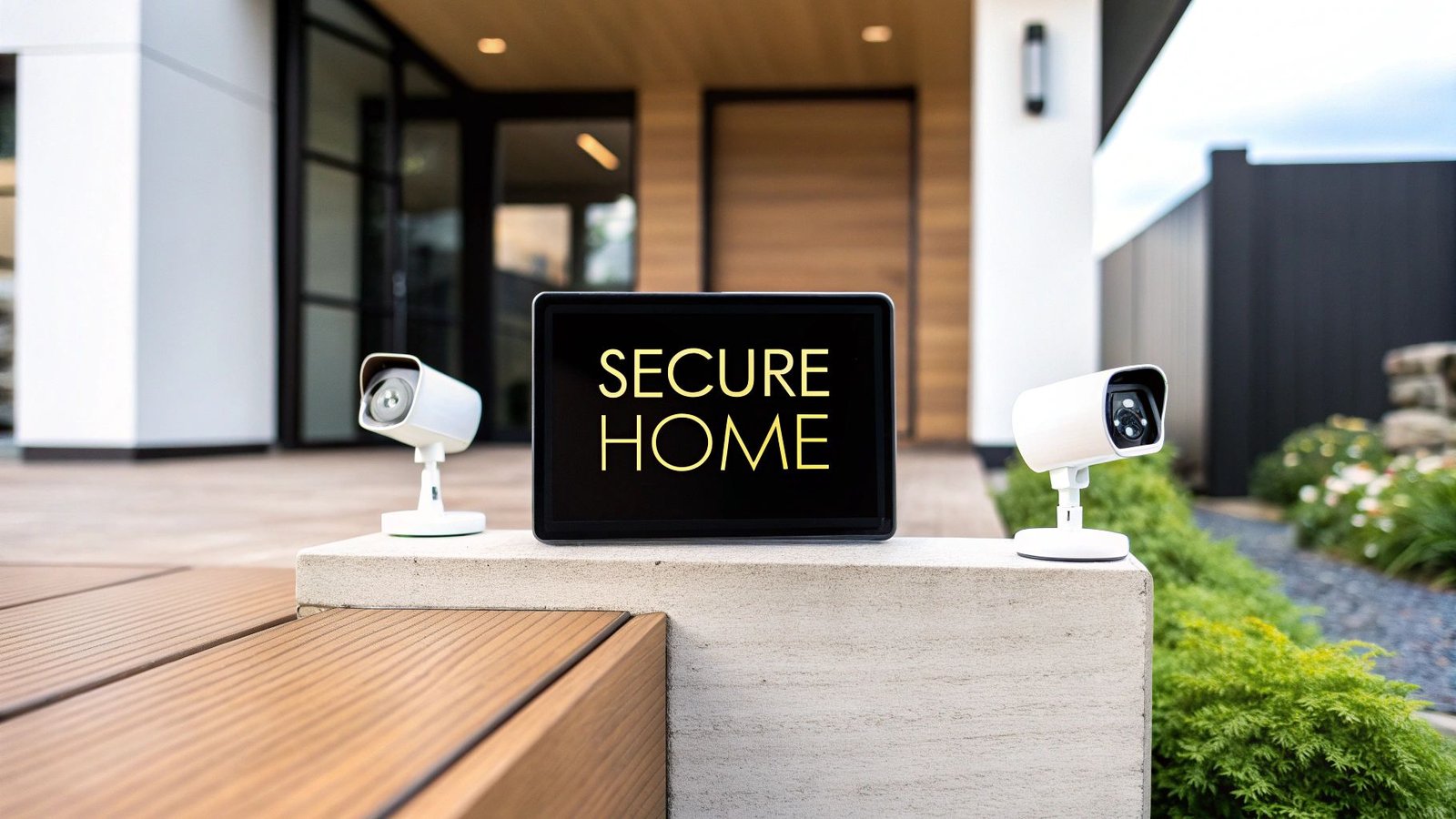
Leave a Reply to Smart Home Hub Comparison for Your Connected Home – Automated Home Guide Cancel reply